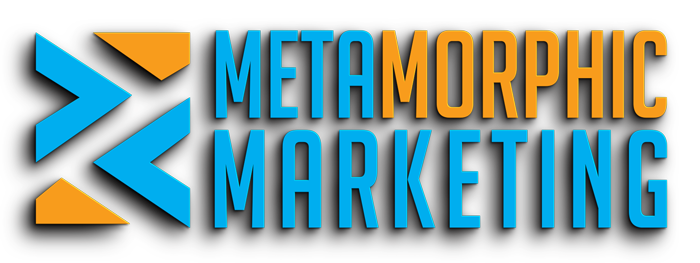Account-Based Marketing (ABM) has evolved significantly over the years, and as we look towards 2025, it’s clear that technology will play a pivotal role in shaping its future. Companies are increasingly turning to ABM strategies to target key accounts and deliver personalized experiences. The technologies emerging today promise to make ABM more efficient, data-driven, and effective.
In this article, we’ll explore some of the key technologies that are set to redefine ABM by 2025 and how they can be leveraged to enhance marketing efforts.
The Rise of Artificial Intelligence in ABM
Artificial Intelligence (AI) is no longer a futuristic concept; it’s a reality that’s transforming the marketing landscape. In the context of ABM, AI is proving to be a game-changer.
AI-Powered Personalization
AI allows for the creation of highly personalized marketing campaigns by analyzing vast amounts of data to understand customer preferences and behavior. With AI, marketers can predict what content will resonate with specific accounts and tailor their messaging accordingly. This level of personalization was previously unattainable and is set to become the norm by 2025.
AI-driven personalization extends beyond mere content; it encompasses timing and channel optimization. By understanding when and where prospects are most active, AI can suggest the best times to engage, ensuring maximum impact. This granular personalization fosters deeper connections and enhances customer experiences.
Furthermore, AI enables dynamic content adaptation. Marketers can create adaptable content pieces that change in real-time based on user interaction. This ensures that prospects receive the most relevant information, increasing the likelihood of conversion.
Enhanced Predictive Analytics
Predictive analytics powered by AI enables marketers to identify which accounts are most likely to convert and when. This technology helps in prioritizing efforts and resources on high-value accounts, increasing the efficiency of ABM campaigns. By 2025, we can expect predictive analytics to be a standard tool in every marketer’s toolkit.
Predictive analytics also aids in risk assessment. By analyzing historical data and market trends, AI can forecast potential challenges and suggest proactive measures. This foresight allows marketers to mitigate risks before they impact campaigns.
Additionally, predictive analytics facilitates the identification of emerging opportunities. By continuously monitoring market dynamics and consumer behavior, AI can highlight new avenues for engagement, keeping marketers ahead of the curve.
Intelligent Content Creation
AI is revolutionizing content creation by automating the generation of customized content. By 2025, AI tools will be able to create compelling narratives tailored to individual accounts, saving marketers time and resources.
These AI tools will analyze previous interactions and preferences to craft messages that resonate with each account. This ensures that every piece of content is relevant and impactful, enhancing engagement and conversion rates.
Moreover, AI-driven content creation will include multilingual capabilities, allowing marketers to cater to global audiences without language barriers. This will open new markets and expand the reach of ABM campaigns.
The Impact of Big Data on ABM
Data is the lifeblood of any marketing strategy, and ABM is no exception. The ability to collect, analyze, and interpret large volumes of data is crucial for successful ABM campaigns.
Data-Driven Decision Making
By 2025, the integration of big data into ABM strategies will allow marketers to make more informed decisions. Access to comprehensive datasets will provide insights into account behaviors, preferences, and buying patterns, enabling more targeted and effective marketing efforts.
Big data allows for the segmentation of accounts into highly specific categories. This segmentation facilitates the creation of targeted campaigns that resonate with each segment’s unique characteristics and needs.
Furthermore, big data empowers marketers with competitive intelligence. By analyzing industry trends and competitor activities, marketers can position their offerings strategically, gaining a competitive edge.
Real-Time Data Utilization
With advancements in technology, real-time data processing will become more accessible. Marketers will be able to adjust their strategies on the fly based on the latest data insights, ensuring that their ABM campaigns remain relevant and effective.
Real-time data utilization enables immediate feedback loops. Marketers can quickly assess the impact of their campaigns and make necessary adjustments, improving overall effectiveness and ROI.
Moreover, real-time data supports agile marketing strategies. Marketers can swiftly respond to market changes and emerging opportunities, maintaining the relevance and competitiveness of their campaigns.
Predictive Customer Insights
Big data analytics provide predictive insights into customer behavior, enabling marketers to anticipate needs and preferences. By 2025, predictive customer insights will be integral to ABM strategies, driving proactive engagement.
These insights allow marketers to tailor their offerings and messages to align with anticipated customer demands. This proactive approach increases satisfaction and loyalty, strengthening customer relationships.
Additionally, predictive customer insights support personalized product development. By understanding future customer needs, businesses can innovate and develop products that meet those needs, driving growth and success.
The Role of Automation in Streamlining ABM
Automation is set to revolutionize ABM by reducing manual tasks and increasing efficiency. As we move towards 2025, automation tools will become more sophisticated, allowing marketers to focus on strategy rather than execution.
Automated Campaign Management
Automation tools will handle the repetitive aspects of campaign management, such as sending emails, posting on social media, and tracking engagement metrics. This will free up valuable time for marketers to focus on crafting compelling content and strategies.
Automated campaign management also includes advanced scheduling capabilities. Marketers can plan and execute campaigns at optimal times, ensuring maximum reach and impact without manual intervention.
Moreover, automation tools provide detailed analytics and reporting. This allows marketers to assess campaign performance accurately and make data-driven decisions for future initiatives.
Workflow Optimization
Automation will also optimize workflows by ensuring that the right tasks are carried out at the right time. This will lead to more streamlined ABM processes, reducing the time and effort required to manage campaigns and improving overall results.
Workflow optimization includes task prioritization, ensuring that high-impact activities receive attention first. This prioritization maximizes resource utilization and accelerates campaign success.
In addition, automation streamlines collaboration within marketing teams. By facilitating communication and coordination, automation tools enhance team efficiency and drive better outcomes.
Lead Nurturing Automation
Automation tools will play a crucial role in lead nurturing by automating follow-up communications and engagement activities. By 2025, automated lead nurturing will be essential for maintaining continuous engagement with prospects.
These tools will enable personalized follow-ups based on lead interactions and behaviors. This ensures that leads receive relevant information at each stage of the buyer’s journey, increasing conversion rates.
Automated lead nurturing also includes scoring systems that prioritize leads based on their readiness to convert. This allows sales teams to focus on high-potential leads, optimizing conversion efforts.
The Importance of Integration in ABM Technologies
For ABM technologies to be truly effective, integration is key. In 2025, we can expect to see more seamless integration between different marketing tools and platforms.
Unified Marketing Platforms
Unified platforms will allow marketers to manage all aspects of their ABM campaigns from a single interface. This will not only simplify the process but also ensure consistency across all marketing channels.
Unified platforms will provide comprehensive dashboards that offer a holistic view of campaign performance. Marketers can monitor metrics and KPIs in real-time, facilitating informed decision-making.
Moreover, unified platforms support seamless collaboration across departments. By integrating sales, marketing, and customer service functions, these platforms enhance overall organizational efficiency.
Cross-Platform Data Sharing
The ability to share data across platforms will provide a more holistic view of each account, enabling marketers to deliver more cohesive and effective campaigns. By 2025, cross-platform data sharing will be a standard feature of most marketing technologies.
Cross-platform data sharing enhances the accuracy of customer profiles. By integrating data from various sources, marketers can gain a 360-degree view of customer interactions and preferences.
Additionally, cross-platform data sharing facilitates personalized customer experiences. Marketers can deliver consistent messaging across channels, creating a seamless journey for customers.
Integration with Emerging Technologies
Integration with emerging technologies, such as IoT and blockchain, will further enhance ABM strategies. By 2025, these integrations will unlock new possibilities for data collection and security.
IoT integration will provide real-time insights into customer interactions with connected devices. This data will inform personalized marketing strategies and product development.
Blockchain integration will ensure data security and transparency. By leveraging blockchain, marketers can build trust with customers by protecting their data and ensuring ethical data practices.
The Future of ABM Technologies
As we look towards 2025, it’s clear that the future of ABM lies in the integration of cutting-edge technologies. The combination of AI, big data, automation, and seamless integration will empower marketers to deliver more personalized, efficient, and impactful campaigns.
Embracing Change
Marketers who embrace these technologies and adapt to the changing landscape will be well-positioned to succeed in the competitive world of ABM. By staying ahead of the curve, they can ensure that their strategies remain effective and relevant.
Embracing change involves continuous learning and adaptation. Marketers must stay informed about technological advancements and be willing to experiment with new tools and strategies.
Moreover, embracing change requires a cultural shift within organizations. Businesses must foster a culture of innovation and agility, encouraging teams to embrace new ideas and approaches.
by Markus Spiske (https://unsplash.com/@markusspiske)
Preparing for 2025 and Beyond
To prepare for the future of ABM, marketers should start investing in these technologies today. By building a strong technological foundation, they can ensure that they are ready to take advantage of the opportunities that 2025 will bring.
Preparation involves strategic planning and investment in technology infrastructure. Marketers must identify the tools and platforms that align with their goals and allocate resources accordingly.
Furthermore, preparation includes upskilling teams to leverage new technologies effectively. Providing training and development opportunities ensures that teams are equipped to implement and optimize ABM strategies.
The Role of Continuous Innovation
Continuous innovation will be crucial in shaping the future of ABM. By fostering a mindset of innovation, marketers can stay ahead of trends and drive sustainable growth.
Innovation involves exploring new technologies and methodologies that enhance ABM strategies. Marketers must be proactive in seeking out opportunities for improvement and differentiation.
Additionally, continuous innovation requires collaboration with technology partners and industry experts. By building strong relationships with technology providers, marketers can access the latest advancements and insights.
In conclusion, the future of Account-Based Marketing is bright, with technologies like AI, big data, automation, and integration leading the way. By embracing these advancements, marketers can enhance their ABM strategies and achieve greater success.


